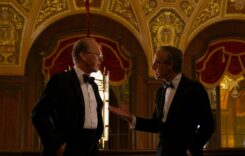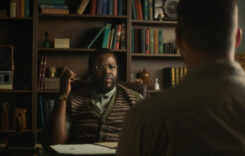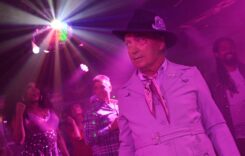DECEMBER 3, 2018
The biggest bonfire currently raging among the nation’s film critics is over the qualities (or lack thereof) of the latest strong Oscar contender, “Green Book.” Don’t mind me. I’m just here to pour some more gasoline on the flames.
“Green Book” is a story based on real events set in 1962. Renowned Jamaican-American classical pianist Dr. Don Shirley (Mahershala Ali) wants to go on a concert tour of the Deep South but realizes that he needs a driver and/or a strongman to protect him.
Enter Frank “Tony Lip” Vallelonga (Viggo Mortensen), a bouncer at NY’s Copacabana nightclub, who, while the mobbed-up nightclub is shut down due to “renovations,” interviews to take on the driver job. Dr. Shirley, who meets him in his ceremonial robes on a majestic throne, decides that Tony is the one to drive him, and soon the unlikely pair is on the road together, following The Negro Motorist Green Book, a volume for black travelers as to which hotels that are safe to spend the night.
“Green Book” is structured to be a two-hander — that is, equal weight would be given to the two dominant characters — but far more emphasis is given here to Tony’s story, possibly because Tony’s son Nick co-wrote the screenplay. And there’s a narrative price to pay for that.
Tony has some racist actions in his past — the film goes out of its way to show him throwing two glasses that African-Americans have used into the garbage, only for them to be retrieved by his wife Dolores (a wonderful if underused Linda Cardellini). But once he gets into the car with Dr. Shirley, whatever preconceptions he has of the pianist are off.
As they get on the road, the gregarious Tony tries to engage Dr. Shirley in conversation, which is not that easy a feat. But once Tony learns that Doc Shirley has never before tasted fried chicken, it’s off to KFC they go. (Fried chicken? Really? Was watermelon not available?) Then it’s up to the white man to educate the black man about soul music, especially the work of Little Richard. The condescension here is palpable.
As I had mentioned earlier, there’s a narrative price to pay for focusing solely on Tony’s story. Take, for example, a scene in which Tony comes upon Dr. Shirley about to be beaten up by racists at a bar. As it plays out in the film, Tony parks the car and tends to errands in town, leaving Dr. Shirley to fend for himself. He returns to find that Dr. Shirley is no longer in the car but is instead in a nearby bar, about to get the stuffing knocked out of him by a pack of local racists. Tony threatens to knock some heads together, and that’s that.
Imagine, if you will, that the scene was less Tony-centric and told instead from Dr. Shirley’s point of view. He’s left alone in the car and, being an alcoholic, needs a drink. He tentatively walks into the bar and is served a glass. Suddenly a bunch of scary racists (real racists, not the Hollywood racists who are used here) are about to kick the crap out of him. Dr. Shirley is frozen, only to have Tony come in to save the day. What Ali could have done if the scene was focused on his character would be gold, but the script never gives him a chance.
In fact, most of Ali’s best moments are not on the page — it’s a gesture or a glance that the actor provides that often reveal more about Dr. Shirley than the inadequate character development laid out in the script. It’s a great performance, despite the screenplay.
Understandably, given his son’s involvement, Tony is given most of the film’s memorable moments, as he learns how to see the error of his formerly-racist ways and embrace his new friend in a kumbaya-like ending. No faulting Mortensen’s performance — he’s actually pretty terrific, even as he is asked to do such silly things as downing an entire unsliced pizza in one sitting.
But in a year which has given us such sophisticated takes on race relations as “The Hate U Give,” “BlacKkKlansman,” “Blindspotting,” and “If Beale Street Could Talk,” “Green Book” feels like a throwback to the kind of well-intentioned civil rights sagas of the 1960s.
The heart of “Green Book” is in the right place, but its head is stuck in the world of 50 years ago. It’s an enormous missed opportunity, a film that could have challenged an audience in the 21st century but is instead content with pandering to them instead.
GRADE: C












